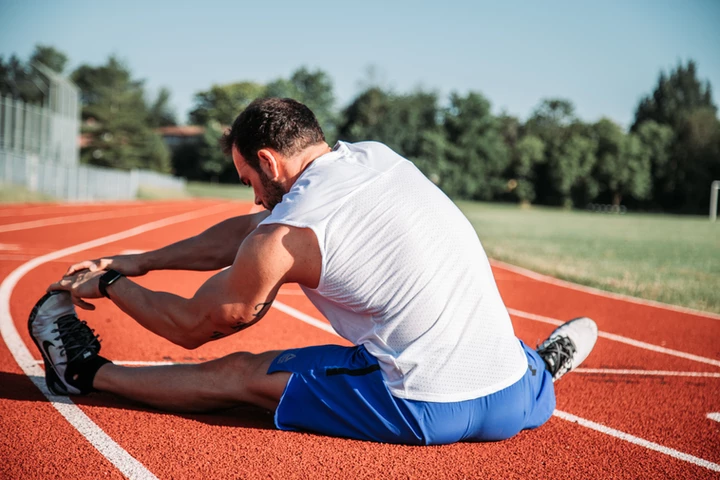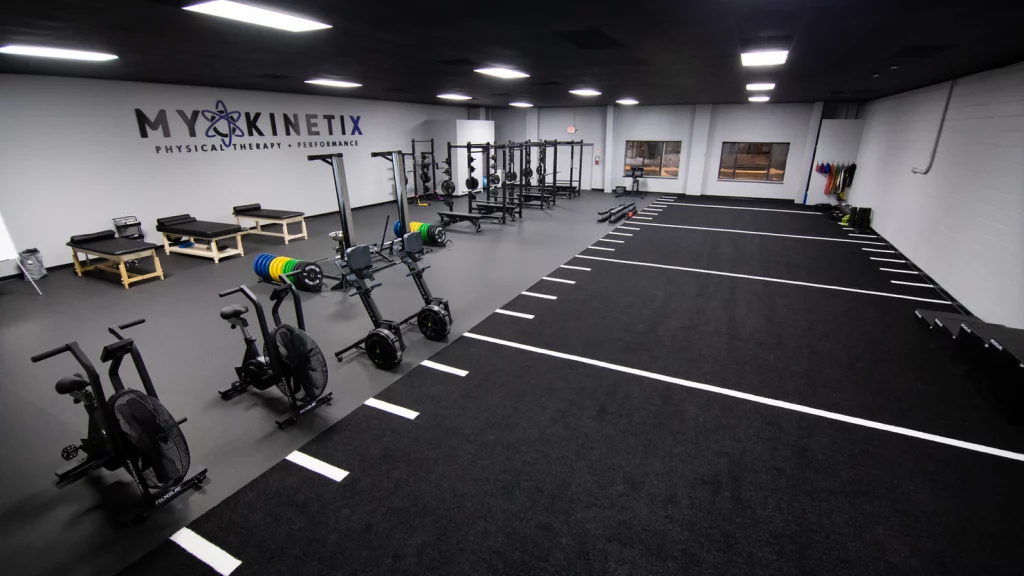- How Hip injuries can be devastating for athletes due to the hip’s role as a stabilizer, support system, and prime mover in various movements.
- Why Hip pain in athletes is caused by improper training, acute injuries to muscles and bones around the hip joint and Recognizing the different hip motions that is essential for diagnosis and treatment.
- What Hip pain in athletes is caused by various acute and chronic injuries that requires conservative treatment and physical therapy for recovery.
Have you ever wondered what type of injury can sideline an athlete? From knee blowouts to Achilles tendon tears, the lower body plays a huge role in almost every sport imaginable. It should not come as a surprise, then, that hip injuries can be equally devastating.
The hip is a large joint that plays multiple roles as a stabilizer, support system, and prime mover for the body. Because the hip is such a crucial part of everyday movement, let alone athletics, hip pain can significantly diminish your quality of life and sports performance.
To better understand how different injuries cause hip pain, it’s important to have a general idea of the anatomy of the joint. Let’s start with a high-level overview.
Anatomy of the Hip Joint
The hip joint is made up of the long bone of the thigh, aka the femur, and the pelvis. Where the femur meets the pelvis is a protective layer of tissue referred to as the labrum. Not only does the labrum protect the joint by providing cushion, but it’s also a key player in hip stability.
There are quite a few muscle groups that surround the hip joint. The first ones that most people think of are the hamstrings and the quads. The hamstring muscles extend the hip backward and bend the knee, whereas the quads flex the hip forward and straighten out the knee.
Two different muscle groups are responsible for moving the hip in a different plane of motion. The groin muscles are responsible for moving the leg across the body – like you’re kicking a soccer ball. This is known as hip adduction. The glutes extend the hip like the hamstrings, but they are also responsible for hip abduction which occurs by moving the leg out to the side.
As you can see, given all of the components of the hip joint, there are many different players when it comes to hip pain in athletes. So when it comes to a diagnosis, there are a handful of things that could go wrong.
What is the Source of Hip Pain in Athletes?
As far as hip injuries that happen over time, these usually result from improper training and form. Repetition of an incorrect movement is particularly detrimental to an athlete, especially athletes who only play one sport.
Expert tip: Parents, encourage your young athletes to excel in a variety of sports. Not only is this good for skill development and sportsmanship, but it also allows the body to move in different patterns of motion. This is just one of the reasons why early specialization of one sport is usually discouraged in children and adolescents.
Some injuries can happen in the blink of an eye, otherwise known as acute injuries. They often affect the muscles surrounding the hip and, when severe, can sometimes result in injury to the bone.
So, what could it be?
Most athletes with hip pain will immediately jump to the conclusion that they have a labral tear. While a labral tear is not the only cause of hip pain, it’s one of the most widely known. Unfortunately, labral tears commonly present with another injury to the hip joint. Identifying signs and symptoms of a labral tear are (1) pain in the joint; and, (2) a “catching” sensation with movement.
But there are a few other areas within the hip that could be affected in addition to the labrum. Before we tackle acute causes of hip pain in athletes, let’s review the different motions the hip is responsible for.
Hip flexion – brings your knee to your chest
Hip extension – brings your glute closer to your back
Hip adduction – brings one leg across the body
Hip abduction – brings your leg out to the side
Hip external rotation – twists your leg from the front of your body to the outside
Hip internal rotation – twists your leg from the front of your body to the inside
Knee flexion – bending your knee
Knee extension – straightening out your knee
Causes of Acute Hip Pain in Athletes
Adductor Strain
Also known as a groin strain, this is the most common cause of hip pain in athletes. Usually, as a result of sprinting and cutting, groin strains usually affect athletes who play soccer and ice hockey.
Some of the signs and symptoms associated with an adductor strain include:
- Sudden onset of sharp pain in the groin
- Swelling at the site of injury
- Bruising (sometimes)
- Pain when stretching the leg into hip abduction
- Pain when moving the leg into hip adduction
In more severe cases, the adductor tendon may rip off a tiny piece of the bone where it attaches to the pelvis. This is known as an avulsion fracture, and it usually presents with tenderness over the area of the pelvis that’s affected. Avulsion fractures are most commonly seen in young athletes.
Expert tip: An injury to the sartorius, another muscle in the groin, presents similarly to adductor strains. The difference between the two is that the athlete with a sartorius injury will experience pain with the external rotation of the hip.
Quad Strain
There are four muscles that make up the quad muscle group. They are located in the front of the thigh and are responsible for straightening the knee and bending the hip. Oftentimes, you’ll see quad injuries occur from running, jumping, skating, or cycling.
As with adductor strains, the most common symptom of quad strains is pain with stretching and movement – hip extension and knee flexion, and hip flexion and knee extension, respectively. Athletes with hip pain as a result of a quad strain will feel discomfort in the portion of the muscle that was affected by the injury.
Hamstring Strain
Your hamstrings work in opposition to the quads. Think of a donkey kick exercise, and you’ve got your hamstring motion down. A hamstring injury is most common in sprinting and jumping sports.
Here are some signs and symptoms of a hamstring strain:
- A “pop” or pulling sensation
- Swelling at the site of injury
- Pain when stretched into hip flexion and knee extension
- Pain when moved into hip extension and knee flexion

Hip Pointer
A hip pointer is also known as a contusion, or a bruise, of the side of the hip. It is a result of a direct blow to the hip bone and presents with a good deal of swelling and bruising at the site of the impact.
Athletes with a hip pointer will have pain when bending to the same side of the injury and/or twisting towards the opposite side.
Sports Hernia
Unlike a true hernia, a sports hernia does not cause any sort of visible protrusion through the abdomen. Although it shares the same name, location, and occurrence in the athletic population, sports hernias actually refer to a strain of the core muscles. Sports that require fast cutting and twisting will see a good deal of these, especially in sports like soccer, ice hockey, football, and rugby.
Athletes with a sports hernia will have one-sided pain in the groin that worsens with cutting and twisting movements, bearing down (like with a true hernia), and sit-ups.
Next, we’ll look into the more chronic, or overused, hip injuries in athletes.
Causes of Chronic Hip Pain in Athletes
Greater Trochanteric Bursitis
The greater trochanter is a bony area where the glute tendons attach to the femur. Underneath each tendon is a small bursa that reduces friction as the glutes contract. With repetitive movement, particularly those with poor form, the bursae can become irritated and inflamed.
Commonly seen in sports like football, soccer, and ice hockey, athletes with hip pain from bursitis will feel:
- Pain over the greater trochanter
- Pain with hip abduction
- Pain when stretched into hip adduction
Piriformis Syndrome
Found deep under the glute muscles is a small, but powerful, external rotator of the hip known as the piriformis. When this tiny muscle spasms, it can cause numbness and tingling in the leg since it sits atop the sciatic nerve which innerves most of your leg muscles.
Spasms in the piriformis occur when the muscle is tired, weak, or not firing correctly. Along with the numbness and tingling, the muscle itself will likely be sore and tender.
TFL Tendinopathy
The TFL (tensor fascia latae) is another small muscle that flexes the hip. It’s located at the front of the thigh, close to the outside, and near the hip joint. Some people call this muscle the coffee muscle – can you guess why?
A common cause of hip pain in runners, TFL tendinopathy usually results from an abrupt change in your training program. This may include a change in terrain, workout intensity, or speed. Cyclists are also vulnerable to TFL tendinopathy, too.
Frequently misdiagnosed as a quad strain, the most notable symptom in athletes with TFL tendinopathy is tenderness directly over the TFL. They also may feel a snapping sensation when moving from hip flexion into hip extension.
How is Hip Pain in Athletes Treated?
Familiarizing yourself with the array of hip injuries can improve your chances of obtaining an accurate diagnosis, a specialized treatment plan, and a better outcome for recovery.
Conservative treatment is the first plan of action for almost all hip injuries in athletes. Rest, ice, and compression – the holy grail of treatment for a new injury – along with anti-inflammatory medication is usually recommended. However, when that doesn’t work, it’s time to see a specialist.
Typically, athletes presenting with a hip injury will make their way to physical therapy for rehabilitation. Exercises focused on diminishing pain, regaining range of motion, strengthening the injured muscle, and stabilizing the core and pelvis are strongly recommended for these athletes.
To take the guesswork out of treatment, make an appointment to see the sports specialists at Myokinetix in East Hanover, New Jersey. At Myokinetix, you’ll receive a one-on-one evaluation with a doctor of physical therapy who has extensive experience in treating hip pain. Come see for yourself why athletes in the area prefer to work with Myokinetix for all their rehabilitation needs. Call us at 973-585-4990 or visit the website to make your initial appointment.


Thank you for unraveling the complexities of hip pain in athletes. Your detailed analysis offers crucial guidance for both athletes and their coaches/trainers. Kudos to the website for providing insightful content that supports athletes in optimizing their performance and maintaining their health.